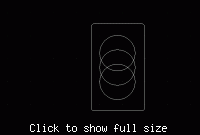Eugen_E
Full Member level 6
drill symbol
Hello,
This may seem a silly question. Many power connectors have pins as metallic sheets with width of about 2-4mm and thickness of 0.3-1mm, thus the pins are not round.
To ensure correct insertion in the past I used pads with huge holes for the power connector, like 3mm. This looks ugly and also is hard to solder, because the solder tends to flow in the hole, the pin being thin.
Can we specify rectangular holes like 3x1mm? Is this option available in the CAD programs, and how it will translate in the drill files? Are the board manufacturers capable of making those?
Hello,
This may seem a silly question. Many power connectors have pins as metallic sheets with width of about 2-4mm and thickness of 0.3-1mm, thus the pins are not round.
To ensure correct insertion in the past I used pads with huge holes for the power connector, like 3mm. This looks ugly and also is hard to solder, because the solder tends to flow in the hole, the pin being thin.
Can we specify rectangular holes like 3x1mm? Is this option available in the CAD programs, and how it will translate in the drill files? Are the board manufacturers capable of making those?
